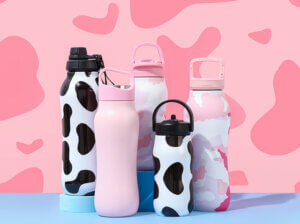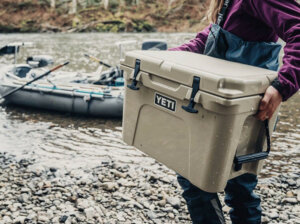Curious about the inner workings of insulated water bottles? Stainless steel, glass, plastic, ceramic, and even silicone – amidst this diverse range, why has stainless steel emerged as the go-to choice for keeping your drinks hot or cold?
Let’s embark on a journey to compare the insulation prowess of these five materials in everyday scenarios. It’s crystal clear that stainless steel water bottles reign supreme when it comes to keeping your beverages at the desired temperature.
But what’s the secret behind this remarkable performance? Do all stainless steel bottles possess the same magical insulation capabilities?
In the upcoming sections, we’ll delve into the concealed intricacies of stainless steel water bottles’ insulation, exploring three key aspects: material, structure, and technology.
Material: Stainless Steel’s Thermal Wizardry
Stainless steel, as a metal, boasts relatively low thermal conductivity. When you pour a piping hot drink into a stainless steel water bottle, its inner layer acts as a formidable barrier, blocking heat transfer and preserving your beverage’s temperature for an extended period.
If you’re seeking top-tier insulation performance, it’s imperative to source high-quality stainless steel. Opt for suppliers like Everich who oversee the entire production process from raw materials to manufacturing. They’re known for their exceptional utilization of “Zhangpu Liao,” a premium stainless steel renowned for its robustness and corrosion resistance.
Structure: The Dual-Layer Advantage
Perhaps you’ve come across the term ‘double-layer stainless steel’ while perusing product descriptions. Well, here’s the secret: double the layers equate to double the insulation power!
The inner layer cradles your drink, while the outer layer provides both protection and aesthetic appeal. The air or vacuum layer sandwiched between these two layers acts as a formidable barrier against heat transfer, further enhancing insulation performance.
Technology: The Vacuum Layer Revolution
The unsung hero of stainless steel water bottle insulation is the vacuum layer. Heat struggles to traverse this vacuum, making the stainless steel bottle incredibly efficient at preserving both hot and cold temperatures.
If your customers complain about subpar thermoses, it might be due to issues with the vacuum layer. During manufacturing, any missteps in the vacuum-pumping process can lead to insufficient sealing or residual air, resulting in reduced heat preservation. It’s time to consider switching to a more reliable supplier.
Everich employs “spinning thinning technology” in their vacuuming process, ensuring that the inner lining remains thin without compromising insulation. This not only reduces weight but also increases the bottle’s capacity – a feature worth looking forward to!
Lid Seal
Apart from these critical factors, don’t underestimate the significance of the lid seal. When evaluating samples, pay close attention to the tightness and compatibility between the lid and the bottle.
Leading Chinese Water Bottle Supplier
In conclusion, the insulation of stainless steel water bottles hides a world of secrets. The seemingly identical stainless steel containers can yield vastly different insulation effects. Everich, with its commitment to high-quality materials, intricate structure, and advanced technology, stands as a guardian of your preferred drink temperature.
If you truly value the insulation performance of stainless steel water bottles, consider Everich, a leading Chinese supplier dedicated to providing top-tier insulated bottles.




